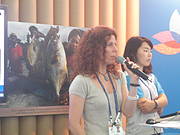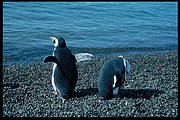Southern Cone conservation: a matter of how we fish
11 September 2012 | Article
Over-exploitation and bycatch are just two of the many direct threats that marine species face in the Southern Cone, a region covering the southernmost area of South America.
“Globally, we need to change not only how much we fish, but how we fish,” says Veronica Cirelli, from Vida Silvestre, an IUCN Member in Argentina. “We need to be more cautious and work on ecosystem-based management.”
Marine fisheries are one of the main economic activities in countries such as Uruguay, Argentina and Chile. Yet species like the hake (Merluccius hubbsi) are now in danger due to fishing pressure. For decades, this fishery has been operating over capacity, and as a result, the hake's reproductive rate has dropped dramatically - by 80%.
The Franciscana dolphin is another case. Four discrete populations have been identified which are also threatened by bycatch. Ten years of research on this species provide the information necessary to conserve the dolphin in the Southern Cone. For example, data shows that the use of acoustic alarms can reduce incidental death in this species.
Vida Silvestre Argentina has came to the Congress to show that sustainable fishing is productive and profitable and does not have to threaten marine life. This means working with all stakeholders to promote sustainably-managed fisheries that are properly regulated.




